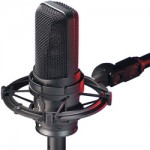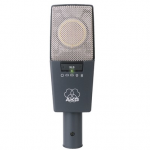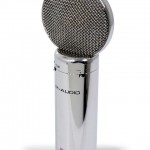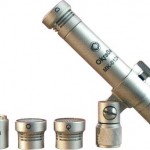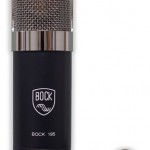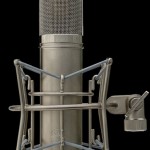Project Studio Toolbox: The Best Mid-Priced Condensers for $500-$1500
Last week, we covered some of the best large diaphragm condenser mics around at an entry-level price of $300. This time, we’ll move up a bracket to review some of the most useful condensers available from $500 to $1,500 new.
Keep in mind that this list is no way conclusive. It only promises to offer a proven handful of options that I’ve used time and again, and which have consistently performed as some of the best in their class.
Also remember that this list focuses only on new condenser mics, and does not include ribbons, dynamics, or a whole array of used and vintage microphones that can be equally good options.
With that out of the way, here’s the roundup:
The Workhorse LDCs
Audio-Technica
AT4050 ($700 street)
As we mentioned last week, Audio-Technica was among the first companies to make condenser mics ubiquitous with their AT4033. They would ultimately take what they learned from the success of that mic and apply it to the slightly more expensive, significantly more well-rounded AT4050.
This is a mic that repeatedly fails to sound bad. It may never have the shimmer of a C12, the body of a U47, or velvety response of a U67, but it was never intended to. The 4050 was designed as an affordable, transparent, swiss-army knife and at that, it succeeds without question.
It’s a workhorse of a microphone that’s become a staple at pragmatic studios, where it’s routinely used on percussion, voice and acoustic instruments. It now occupies a niche once monopolized by the AKG C-414, and although it’s a mic may not always dazzle, it will never disappoint.
AT4047 ($700 street)
Eventually, Audio-Technica decided to build a condenser mic that would offer a little more character and attitude than the decidedly neutral AT4050.
The resulting AT4047 is a design that’s loosely based around Neumann’s classic FET 47. This mic has a bit more midrange “push” than the 4050, and I like mine on kick drums, bass amps and guitar cabs. It also suits plenty of male vocals, especially when a little body and edge are called for.
AKG
C-414 ($800-$950 street)
There may be more distinct versions of the AKG C-414 than any other major microphone in history.
For those of you who are confused by all the models, I recommend the audio history of the C414 I wrote for Trust Me, I’m a Scientist. And for those of you who are in the market for a new mic, just know that there are currently two versions of the 414 available: the relatively flat XLS and the intentionally brighter XL-II.
I’m still a fan of my vintage versions of this mic, but the newest models are well-built, and address some issues I had with the original pattern switches. Their self noise has also been brought down significantly.
To my ear, these new versions sound a little leaner and tighter than some of the originals, but this might be well suited to modern tastes. It’s also worth remembering that the differences can sound slight to some ears.
However your tastes run, the 414 has been a studio staple since it was first introduced, and it’s still a natural choice on drum overheads, stringed acoustic instruments, horns, pianos, amps, and just about anything you can throw at it. I tend to like the brighter “II” versions on acoustic guitars and voice.
M-Audio
Sputnik ($700-800 street)
The Sputnik is a funny-looking, affordable tube microphone that’s much better than I expected. According to its product literature, it was designed to sound like a hybrid of two of the most classic mics in history, and aims to deliver the upper midrange bump of the U47 and the high-end lift of a C12.
This can be a recipe for disaster in most inexpensive mics, but somehow the Sputnik pulls it off. It has a sound that’s forward and clear with just a bit of attitude and tube grit. It may not a great choice on already bright-sounding instruments, but the Sputnik can add life to dull-sounding tracks without taking them into the realm of irritation.
The Sputnik is a good character condenser for a mic locker in need of some zest on the cheap. It sounds more balanced than many affordable, bright condenser mics and there a closeout deals on this now-discontinued model at several dealers.
The SDCs
AKG
C 451 B ($580 Street)
For some reason, people seem to have forgotten all about the AKG C 451 B. It’s a small-diaphragm design that hasn’t changed too much over the years. At one time it was one of the best bets in small diaphragm condenser mics. Today, it still delivers a sound that’s pretty, clean, and crisp, and still does well on acoustic stringed instruments and in all sorts of tight places. The price hasn’t risen too much over the years, either.
Oktava
MK-012 ($380+ street)
The Oktava MK-012 has become one of the most popular small diaphragm condensers of the past ten years, thanks in part to rave reviews in Tape Op Magazine and online. These mics are affordable, versatile and a great deal when purchased in pairs.
To my ears, the sound of the MK012s is a bit more broad and “throaty” than some of the other popular SDCs on the market. I like them on hi-hats, toms, and on sensitive acoustic instruments that don’t agree with brighter-sounding condensers.
Neumann
KM-184 ($850 street)
Neumann makes a few mics for under $1,500, but the one I think deserves serious consideration at most studios is the KM-184.
Detractors say that this mic isn’t as silky or smooth as the original KM84. That’s true, and by design, the KM-184 offers a bit more presence than the originals. This seems to be a general trend across microphone brands, and some engineers argue that using a slightly brighter mic saves them from applying the equalizers they’d reach for otherwise.
Despite the changes over the years, the KM-184 remains a well-balanced mic that can be great on acoustic guitars, string instruments, snare drums and others. If you can find an original at a good price – then yes – those are definitely nice too.
Also worth a look: the beyerdynamic MC 901 and 903, Earthworks mics, and anything from Schoeps.
The “Blue Collar Boutiques”
Bock Audio
195 ($1,000 street)
The Bock Audio 195 is a big, clean-sounding mic with a special “fat” switch designed to deliver extra heft. It’s a good deal on a good FET condenser from one of the best makers of high-end boutique microphones in the world.
Mojave
MA-200 ($1000 street)
Want a bright, airy, affordable microphone that sounds really good? The MA-200 has one tube, one polar pattern and one sound that works especially well on voice. This mic has quite a bit of lift in the high band, but it never sounds sizzly, spitty or harsh.
The MA-200’s silky, enhanced top-end is what I often want a mic to sound like when I’m done EQing it. It’s not always the right mic, but when it is, it can be the perfect mic. Try it on voice, overheads and acoustic guitar.
Peluso
22 251 and 2247 ($1,300 street)
Peluso makes excellent re-interpretations of the classic Neumann U47, AKG C12, and others for a fraction of the price. Models start at a list price of around $1,500 and go up from there. In a similar vein, Lawson and Telefunken are also worth a look, although both companies tend toward at a higher price-point.
That’s it from us from now. Stay tuned for future roundups featuring favorite dynamics and ribbons. And as the economy continues to improve, don’t be surprised to see us run features on some of the most coveted condensers around.
In the meantime, feel free to share your own favorites in the comments section below.
Please note: When you buy products through links on this page, we may earn an affiliate commission.







